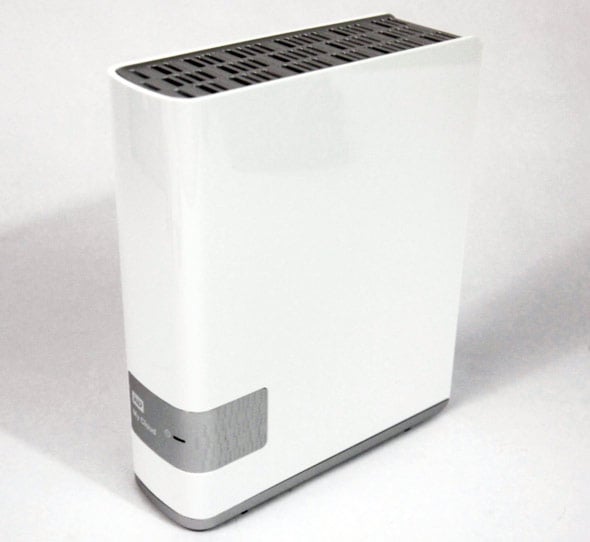WD My Cloud Personal Cloud Server Review
Introduction and Specifications
Cloud storage has emerged as a hugely attractive option for consumers and businesses alike. Consumer cloud storage darling Dropbox has gotten big enough that it warrants its own developer conference, Box is consistently innovating in the business space, Amazon’s storage cloud is massive and popular, and we could go on and on with numerous other companies offering all types of cloud storage services.
Even as cloud storage has exploded, however, there are many skeptics who believe that entrusting your data to a cloud service is foolish. For one thing, you’re giving your precious data (be it family photos or company trade secrets) to a third party, and beyond that security is a concern, vendor lock-in is a possibility, and more recently, many are growing concerned that the government has too much access to data stored on others’ servers. Cloud storage also tends to be rather expensive, should you need to store large amounts of data.
Thus, the diehard proponents of local storage have legitimate concerns when they say they’re distrustful of the cloud. But on the other hand, there are problems with relying solely on local storage, too. You have to diligently manage your own backups, and unless you have an offsite backup, all of your copies are in one geographical location. If your house burns down, or floods, or is burgled, you could easily lose everything.
The middle ground is setting up your own NAS file server with redundancy, but that too can be problematic. Although there are some consumer-friendly options out there, file servers can be tricky to effectively set up and tiresome to manage. Western Digital has developed a solution called WD My Cloud that seeks to nullify part of this problem while also providing a smattering of additional features.

Even as cloud storage has exploded, however, there are many skeptics who believe that entrusting your data to a cloud service is foolish. For one thing, you’re giving your precious data (be it family photos or company trade secrets) to a third party, and beyond that security is a concern, vendor lock-in is a possibility, and more recently, many are growing concerned that the government has too much access to data stored on others’ servers. Cloud storage also tends to be rather expensive, should you need to store large amounts of data.
Thus, the diehard proponents of local storage have legitimate concerns when they say they’re distrustful of the cloud. But on the other hand, there are problems with relying solely on local storage, too. You have to diligently manage your own backups, and unless you have an offsite backup, all of your copies are in one geographical location. If your house burns down, or floods, or is burgled, you could easily lose everything.
The middle ground is setting up your own NAS file server with redundancy, but that too can be problematic. Although there are some consumer-friendly options out there, file servers can be tricky to effectively set up and tiresome to manage. Western Digital has developed a solution called WD My Cloud that seeks to nullify part of this problem while also providing a smattering of additional features.
|
| Capacity: Interface: Ports: OS Support: Processor: Included software: Weight: Dimensions: Warranty: Price: |
2TB (as configured) Gigabit Internet Ethernet x1 USB 3.0 x1 Power supply port Windows XP(SP3)/Vista/7/8 Mac OS X Mountain Lion/Snow Leopard Dual-core WD My Cloud WD My Cloud Dashboard WD SmartWare Pro 2.12 lb 6.7 x 5.5 x 1.9 inches (HxDxW) 2 years limited ~$140 At Amazon.Com |
WD My Cloud is a personal private cloud. At its core it’s essentially a NAS, but it’s designed to be incredibly simple to set up, and managing it requires almost no expertise. Even better, adding devices is designed to be super simple.
We’ll get into the nitty gritty in the subsequent pages, but the idea is that you connect the My Cloud--which just looks like any of WD’s desktop external hard drives--to your home router. My Cloud, which comes in 2TB , 3TB, and 4TB capacities, is ideal for stashing all of a family’s files, including truckloads of photos and video. You can use it as a file repository for your family’s PCs and mobile devices, thus allowing you to keep those devices less cluttered with files, while ensuring that all your data is in a single, always-available location. It’s also easy to pull the files you have stored in “public” cloud storage such as Dropbox onto My Cloud.
Another nifty feature is that instead of sending files via email, My Cloud lets you send links to files, which the recipient can then open at their convenience. You can stream the audio and video stored on My Cloud, and you can open and edit files just as you would if they were stored locally.
Another nifty feature is that instead of sending files via email, My Cloud lets you send links to files, which the recipient can then open at their convenience. You can stream the audio and video stored on My Cloud, and you can open and edit files just as you would if they were stored locally.
My Cloud is even accessible via TVs, media players, and game consoles, and if you need more storage than My Cloud offers, you can connect an external hard drive via its USB 3.0 port to expand its capacity.
You manage the My Cloud and other connected devices via the My Cloud Dashboard and use the WD My Cloud desktop app to manage your stored files and folders. Both pieces of software offer intuitive interfaces that have essentially zero learning curve, as we'll show you next...
You manage the My Cloud and other connected devices via the My Cloud Dashboard and use the WD My Cloud desktop app to manage your stored files and folders. Both pieces of software offer intuitive interfaces that have essentially zero learning curve, as we'll show you next...






